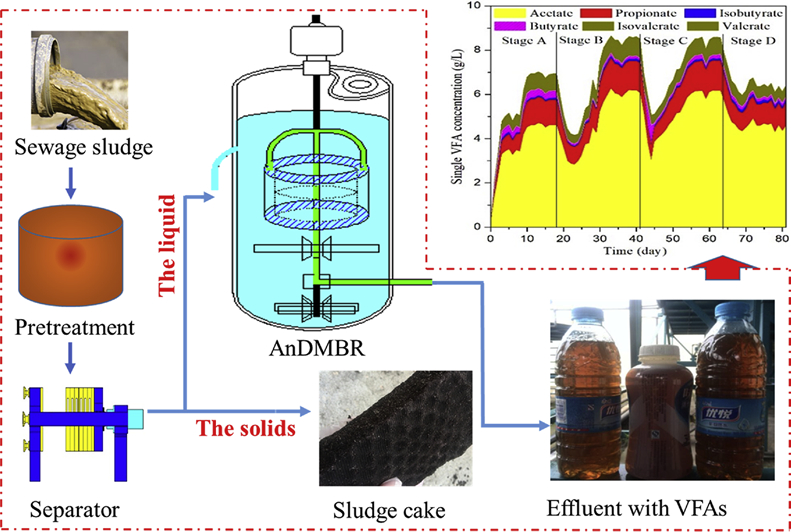A viable approach for commercial VFAs production from sludge: Liquid fermentation in anaerobic dynamic membrane reactor.
Hongbo Liu, Ling Wang, Xuedong Zhang, Bo Fu, He Liu, Yajie Li, Xiaoyou Lu. 全文下载
Jiangsu Key Laboratory of Anaerobic Biotechnology, School of Environmental and Civil Engineering, Jiangnan University, Wuxi 214122, Jiangsu Province, PR China
Jiangsu Collaborative Innovation Center of Technology and Material of Water Treatment, Suzhou University of Science and Technology, Suzhou 215009, PR China
Section of Sanitary Engineering, Department of Water Management, Delft University of Technology, Delft 2628CN, the Netherlands
A novel strategy of liquid fermentation using anaerobic dynamic membrane reactor (AnDMBR) was proposed to enhance volatile fatty acids (VFAs) production from sewage sludge. Results indicated that liquid sludge fermentation in AnDMBR had the potential in commercial VFAs production. VFAs productivity and concentration as well as substrate conversion rate could reach as high as 7.8 kg VFA-COD/m3 d, 60 g/L and 0.38 kg VFA-COD/kg VS, respectively. Moreover, dynamic membrane was stably operated for approximately 70 days. During the operational period, membrane flux was increased from 6.25 to 25 L/m2 d and only once online membrane cleaning was implemented. Results of microbial analyses showed bacterial richness and evenness in AnDMBR were increased by membrane separation and organic loading rate (OLR) increase, but reduced by excessive OLR, which should led the variations in the performances of AnDMBR. Furthermore, the necessity of liquid sludge fermentation for VFAs production was further confirmed by economic assessment and the bioavailability analysis of the residual solids in pretreated sludge. The residual solid was proved to be not conducive to enhance VFAs yield. Conversely, the energy consumption for VFAs production could be reduced from over 100 to below 20 kwh/kg VFAs by avoiding the “useless” residual solids entering into fermenters.
Liquid fermentation; Sewage sludge; Anaerobic fermentation for VFAs production; Anaerobic dynamic membrane bioreactor; Energy consumption;

Journal of Hazardous Materials
Elsevierjournal
10.1016/j.jhazmat.2018.11.082
2019
912-920
Elsevier B.V.
